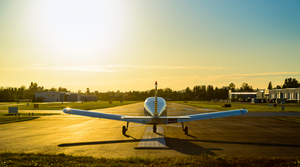Currency requirements for private pilots
Private pilots are generally ambitious people. They are the go-getter types with busy lives, careers, kids, and side hustles or businesses that they operate so sometimes it can be challenging for them to get out to the airport on a regular basis to stay current. To help you to stay on the good side of the FAA and to keep your PPL, you need to understand when it is legal for you to fly and when it is not. If you are a member of a flying club, you also need to follow club rules. These rules are put in place for safety reasons and/or due to insurance requirements.
The Flight Review
All pilots must complete a flight review as outlined in Title 14 of the Code of Federal Regulations (14 CFR) part 61, § 61.56 and the recent flight experience requirements of § 61.57. A flight review is good for 24 calendar months and expires at the end of the month, two years after your last flight review. The flight review consists of an hour of ground instruction and an hour of flight instruction. As part of the flight review, (i) you will look at the current general operating rules of FAR part 91, and (ii) you will be evaluated on your proficiency in the aircraft for which you are rated.
The successful completion of the review must be noted in your logbook by your instructor. You cannot fail a flight review so don’t worry. If you haven’t flown in a while and are not very proficient on the flight portion of the review, your instructor will simply log it as training and schedule more time with you for additional training until you are able to safely operate the aircraft. Once this is done and you have satisfactorily met the requirements of the flight review, your instructor will provide the endorsement in your logbook and you will be good for the next 24 months.
A note about the flight review, although the FAA requires the review be performed every 24 months, if you don't fly very often, I highly recommend that you get a flight review annually. The less you fly, the more important it is for you to fly with an instructor at least once a year to stay proficient. If you read the statistics, lack of proficiency is one of the leading factors in loss of control accidents with GA pilots. Professional airline pilots get checked out annually so why shouldn't we?
For more information on currency requirements and guidance for the flight review check out the FAA’s Advisory Circular 61-98D.
Carrying passengers
As pilots, we really enjoy taking our friends and family flying with us. Whether its a cross-country trip, a $100 hamburger, or just to sightsee the local area, if you intend to carry passengers, there are other requirements that you should be aware of in addition to the flight review every 24 months.

Per the regs, no person may act as a pilot in command of an aircraft carrying passengers or of an aircraft certificated for more than one pilot flight crew member unless that person has made at least three takeoffs and three landings within the preceding 90 days:
- You must be the sole manipulator of the flight controls for these three takeoffs and landings. You must also do this in the same category, class, and type aircraft. If the aircraft you are flying requires a type rating then these takeoffs and landings have to be in the same type aircraft. Your landings don’t need to be made to a full stop. With three touch and goes, you've met the requirement and you’re good to go but only if the aircraft is a tricycle gear aircraft. If you fly a tailwheel airplane, the three takeoffs and landings must be made to a full stop.
- What if you intend to fly passengers at night? If so, you will need to do three takeoffs and landings at night and your landings will need to be made to a full stop so touch and goes will not satisfy the night requirement. The FAA defines night as the period beginning 1 hour after sunset and ending 1 hour before sunrise.
See you at Oshkosh!
#flysafe

